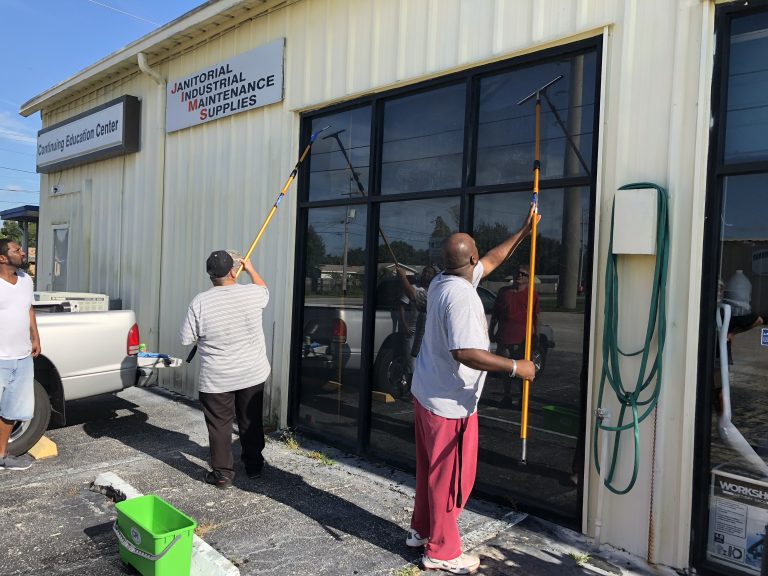Stephen Ashkin-Green Cleaning Action Plan
Lights, Camera, Action! Your Green Cleaning Action Plan
By Stephen Ashkin, The Ashkin Group
It is becoming more clear that our economy and environment are inextricably linked: now is the time when we, as a nation and planet, need to come to terms with the fact that this is no longer the world that our grandparents knew.
So, for just one moment, please put your beliefs aside and consider a simple reality of our world, and the world that our children will inherit in 40 years.
The world and changes
My grandparents immigrated to America around 1900.
At that time, there were approximately 1.7 billion people sharing our planet. Today, there are approximately 6.4 billion people, which represent a 375 percent increase in just 100 years.
And in 2050, when my children are my age, there will be approximately 10 billion people sharing our planet.
While it took mankind thousands of years to get to 1.7 billion, we are now adding another billion people approximately every 15 years.
According to the United Nations and the World Resources Institute, the population of developed countries, such as the United States, Canada, Europe, Japan, along with other developed countries, remains relatively stable, while most of the global population growth is coming from developing countries such as India, China and from the African continent.
Here is the challenge: Just 100 years ago, when there were just a couple billion of us, there seemed to be plenty of resources for all to share. But when global population climbs upwards to 10 billion people at the same time developing countries become more affluent, this confluence of events will force us to rethink how we do things.
As these developing countries work to provide better housing, schools and hospitals for their people, the global demand for steel, concrete and other minerals will increase, as will the demand for other products and the natural resources needed for construction.
As their people become more affluent, they will desire many of the same comforts that we take for granted, such as indoor plumbing with hot water on demand and electricity to light, heat and cool their homes, as well as all the gadgets and gismos ranging from computers and cell phones to refrigerators and cooking stoves.
And with these comes the demand for energy and materials to make all this stuff.
Today, in many of the developing countries, people customarily ride bicycles to work or take buses or other means of public transportation. But as they become more affluent, they are likely to be no different from those in developed countries by desiring personal cars, especially when commuting long distances in the rain or snow. And with this comes an increased demand for materials to build the vehicles and the fuels to power them.
And as global population grows to 10 billion, the demand for food and water will increase. If we want to feed all the planet”s people (which all governments in both developed and developing countries desire), we will need to produce more food and to do so using less water as the competition between water for drinking and farming goes global.
Clearly, our world in 2013 is different from that in 1900 due to global population growth and the competition for limited natural resources. This is an inevitable consequence of the increasing population growth.
And the world we are leaving our children and grandchildren will again be different than today because of global population and even greater competition for resources, some of which may be diminishing.
The simple facts
What has changed is not politics or ideology.
Rather, it is the simple fact that there are more mouths to feed, people to clothe and shelter and other basic needs that our children and grandchildren will have to address.
They simply cannot follow the same path for constructing buildings and manufacturing products that previous generations had done when there were so many less of us. Nor can they follow our path for energy use, food and other products.
That is the challenge for our children and grandchildren. The good news is that there are many things that we can do today, both in our businesses and in our own lives, which can really make a difference.
And much of it is good business — good for entrepreneurs.
That”s right. As we reduce our consumption and reduce waste, and use products that have less of a negative impact on the environment, we are making important environmental improvements and saving money.
And at this time in history, these are both terrific goals regardless of politics or ideology.
The rest of this article is your action plan, several specific steps you can take to not only care for the environment, but to create a better business for yourself.
The type of company you run and its size will have an impact on how many of the following points you can implement.
What you can do with your business
Reward sustainable behavior when choosing suppliers. In the end, companies that are taking sustainability seriously and eliminating inefficiencies and waste in everything they do will be better, more financially secure suppliers in the long run.
Use green products and equipment. These can be simple and easy opportunities. Your supplier, no doubt, has a selection of green products and equipment you can choose from, along with marketing materials to help get your message out to your customers.
But be sure to try to reduce consumption of all products and materials. It is not enough to just use “greener” products.
Increase maintenance on equipment so they perform optimally and last longer. For many operations, there are large savings that can be found in these areas, and when equipment lasts longer there are significant environmental benefits as well.
Conserve water in the cleaning process through low-moisture cleaning.
What you can do with your vehicles
Trucks and other vehicles have huge cost implications, as well as environmental impacts in terms of the materials used to make, operate and dispose of them at the end of their life.
Better route planning to eliminate excess mileage and idling and improving maintenance, including easy things such as insuring proper air pressure in tires and alignment, can save money, improve efficiency and extend the life of vehicles.
Many businesses operate a variety of vehicles. If this is your situation, match the size, capacity, performance and other characteristics with the job at hand. Using a vehicle that is larger or smaller than necessary will waste resources, time or both.
Your business “footprint” technically should also include the vehicles operated by your internal personnel as they commute to work, as well as the vehicles used by sales people — even if they are their personal vehicles.
To reduce this footprint and the associated environmental impacts, consider a program to encourage the use of public transportation, carpooling, ride sharing or buying/leasing high-mileage hybrid vehicles.
Another opportunity is to allow some employees, such as those involved in sales or those that have office duties, to periodically work from home. Don”t forget to measure, track and report on these efforts. Not only do they help the environment, but many employees will appreciate these programs, as it increases their job satisfaction and will leave more money in their pocket.
What you can do with your people
What makes sustainability different from an environmental program is its inclusion of issues affecting an organization”s people, and among the first and most important issues in the United States is training, with a focus on effective processes that improve performance and eliminate waste.
So get people involved, empower and motivate them. Share the responsibility, as people want to make a difference. To help them do this, make sure to measure, track and report on at least a monthly basis so they are getting feedback on their performance. For example, report on your vehicle or equipment consumption of fuel. This will encourage employees to conserve.
Beyond training, consider issues including diversity in hiring and equal opportunity for advancement, along with pay and benefits (a growing issue will be a “living wage”).
Most businesses are also good community citizens, and these issues include philanthropy by both the company and by individual employees, volunteerism and similar acts. These should all be measured, tracked and reported.
What you can do with your green marketing
Get involved and get started. Remember that you are attempting to sell your company as an environmentally-friendly option.
Don”t just join and pay membership dues to organizations, such as the U.S. Green Building Council, but participate actively.
Set a goal to join a committee, board of directors or other opportunities to serve.
Look for opportunities to speak about green issues during monthly meetings, as well as opportunities to publish in trade journals, local newspapers and magazines, as these are good ways to build credibility and to prospect for new customers.
From a sales perspective, begin by focusing on green buildings, as these building owners and facility managers understand the issues and have already made the commitment to be green.
Organizations to look for include the members of the U.S. Green Building Council and buildings in their Leadership in Energy and Environmental Design (LEED) rating system (www.usgbc.org).
In addition, there are other “green” organizations representing almost every building segment including homes, schools, hospitals, hotels, restaurants and more. A simple online Internet search will likely help develop an extensive prospecting list. Join local chapters or groups and get involved and get noticed.
When developing your green sales pitch (your position in the marketplace), make sure you don”t intentionally or even inadvertently “greenwash”, which simply means that you are exaggerating the environmental bene-fits that your company or service offers.
To avoid greenwashing, just make sure you can document your claims. So if you say that your service uses X percent less water (or fuel, or whatever) than your competitors or traditional services, have the proof to back up your claim.
When developing your actual marketing literature, consider using recycled paper or, better yet, paper from sustainably managed forests and, of course, print everything two-sided.
And for the pictures to decorate your brochures, consider using people rather than waterfalls or deer leaping through the forest.
After all, the real species we are ultimately trying to protect is human and to make the planet a better place for our children and grandchildren.
Making a difference
The most important takeaway from all of this is that, due to global population growth, our way of doing things must change or we will leave extraordinary burdens for our children and grand- children.
Regardless of political or ideological inclinations, as carpet cleaning, remediation and restoration professionals, making a difference in the world by reducing wastes of all kinds (energy, water, chemicals, vehicles, equipment, people, time, etc.) not only helps to create a better future, but it can help create a better and more profitable business today.
![]()



